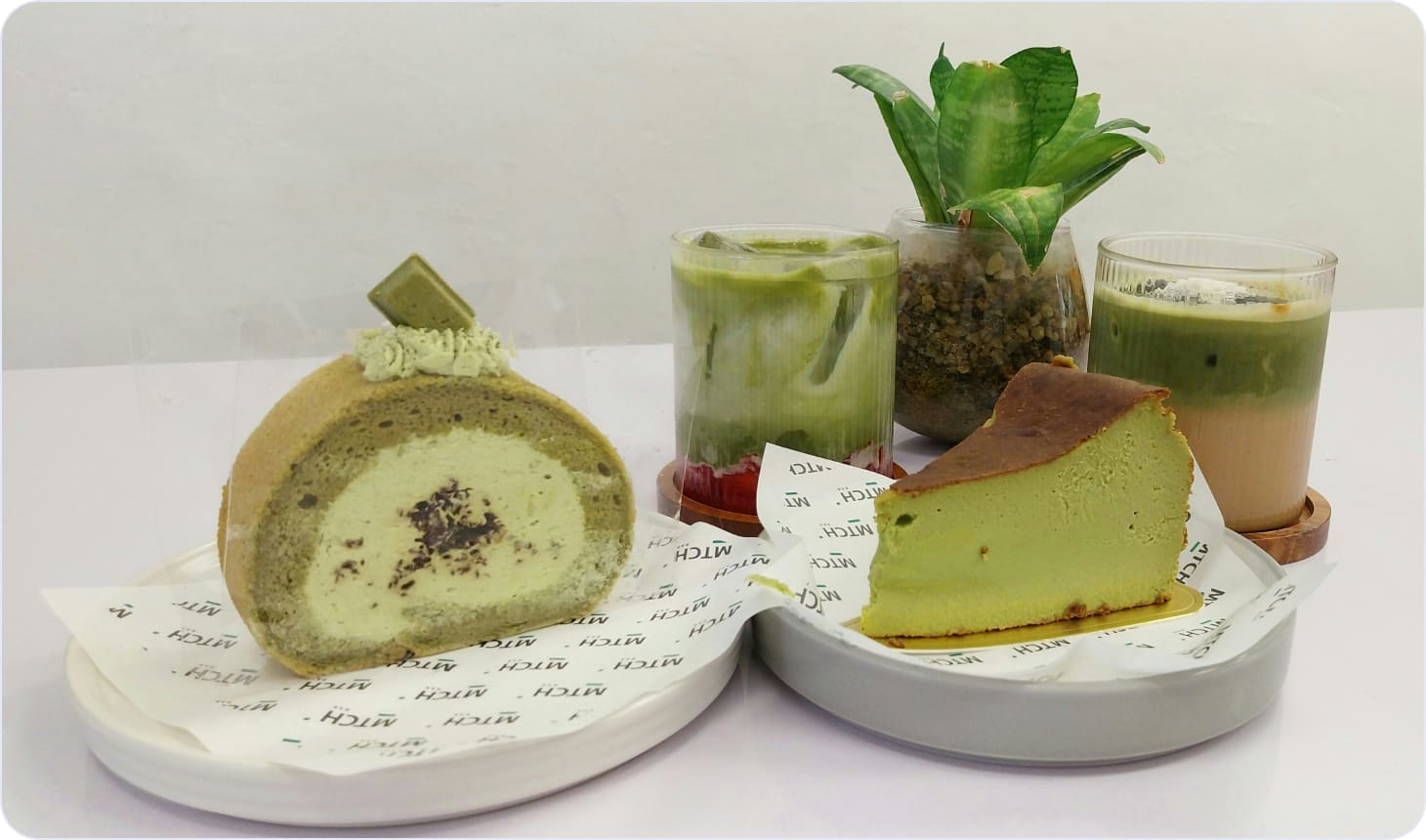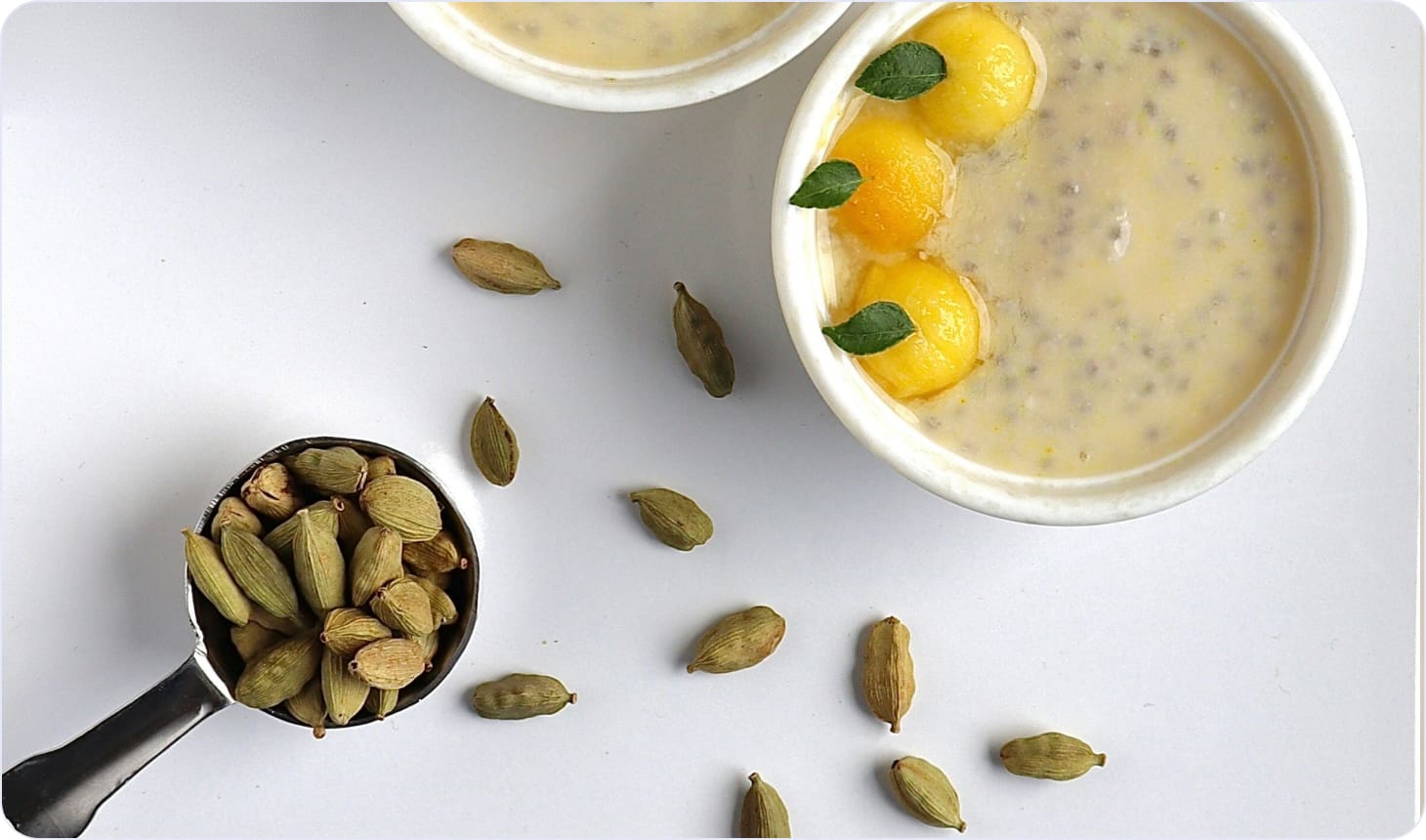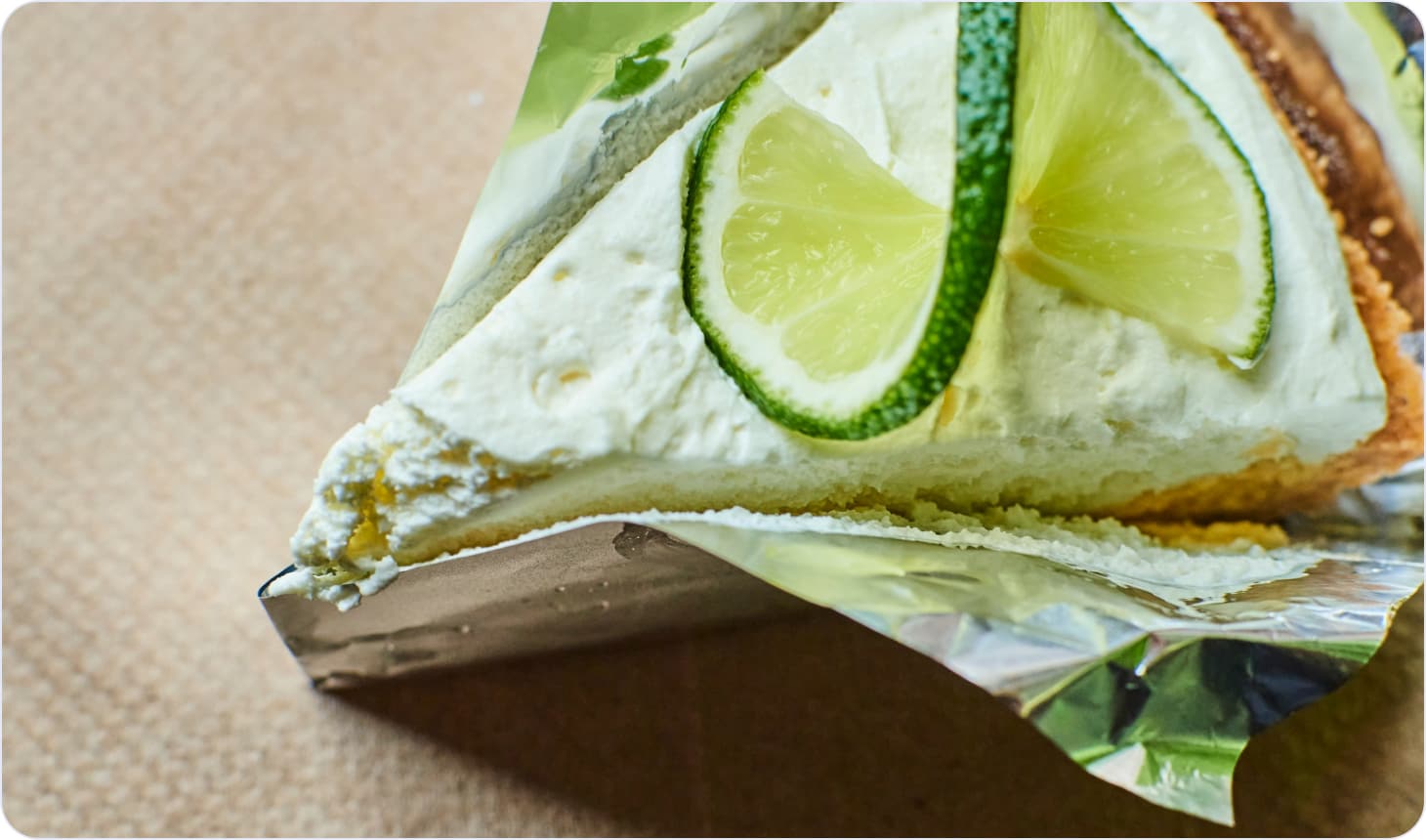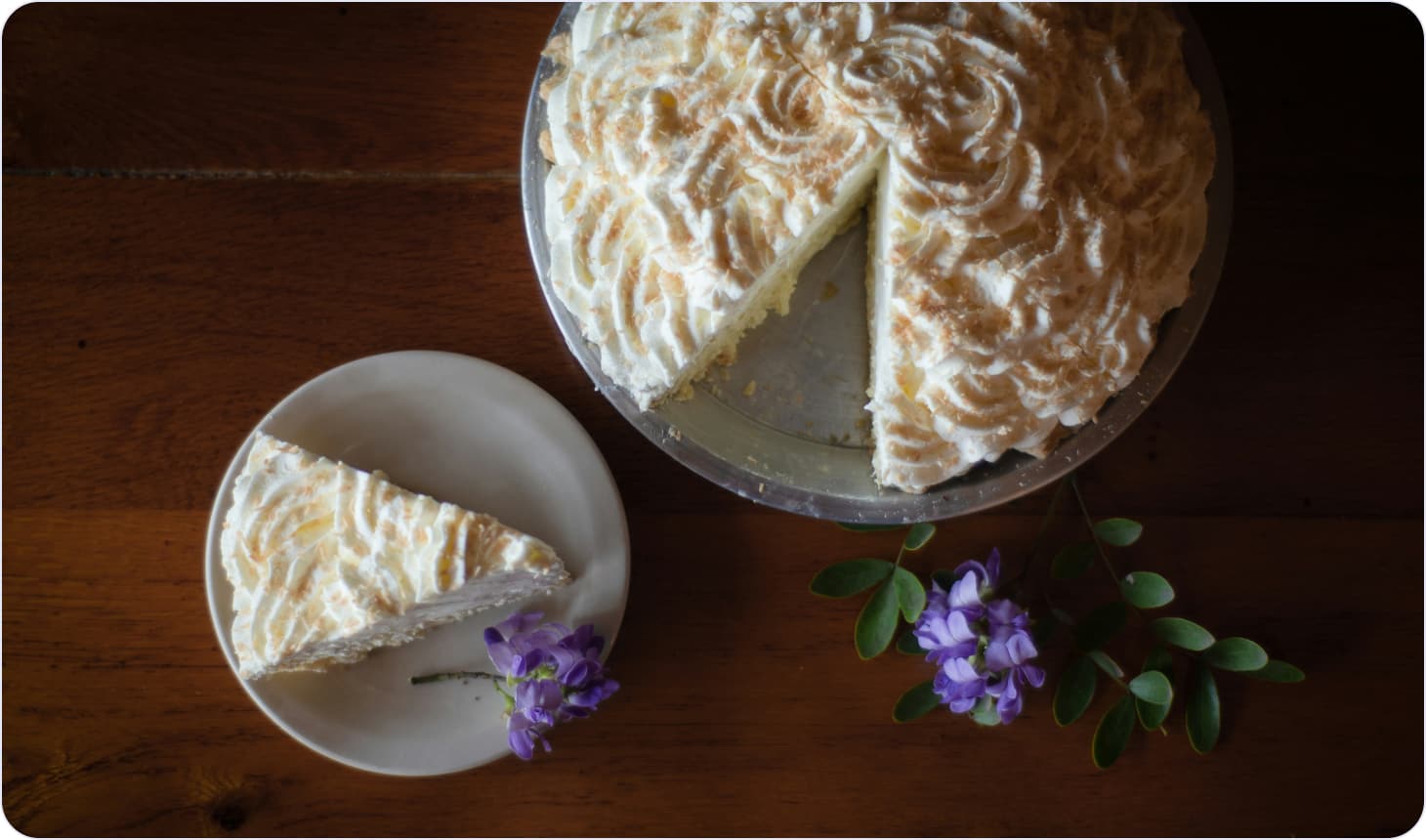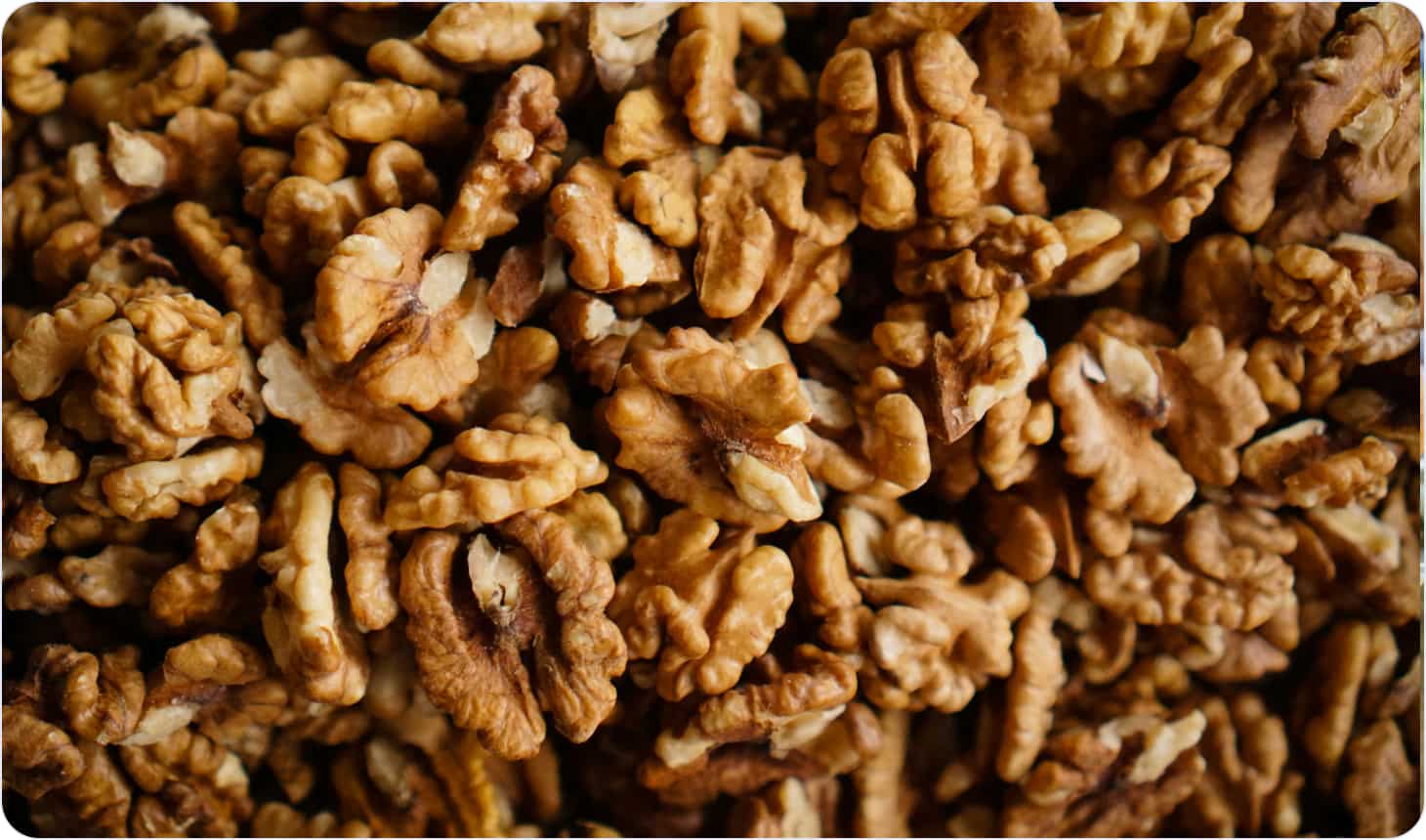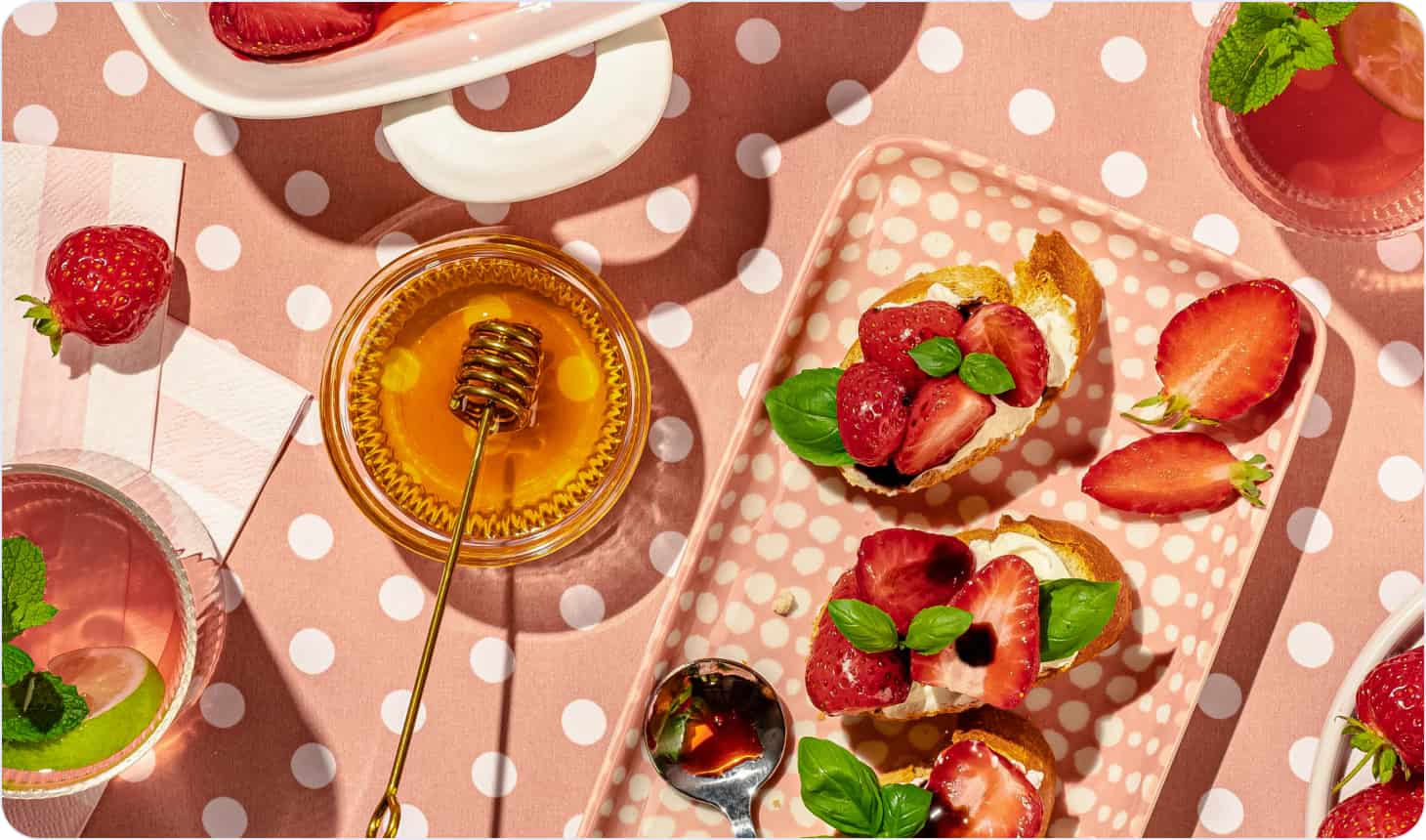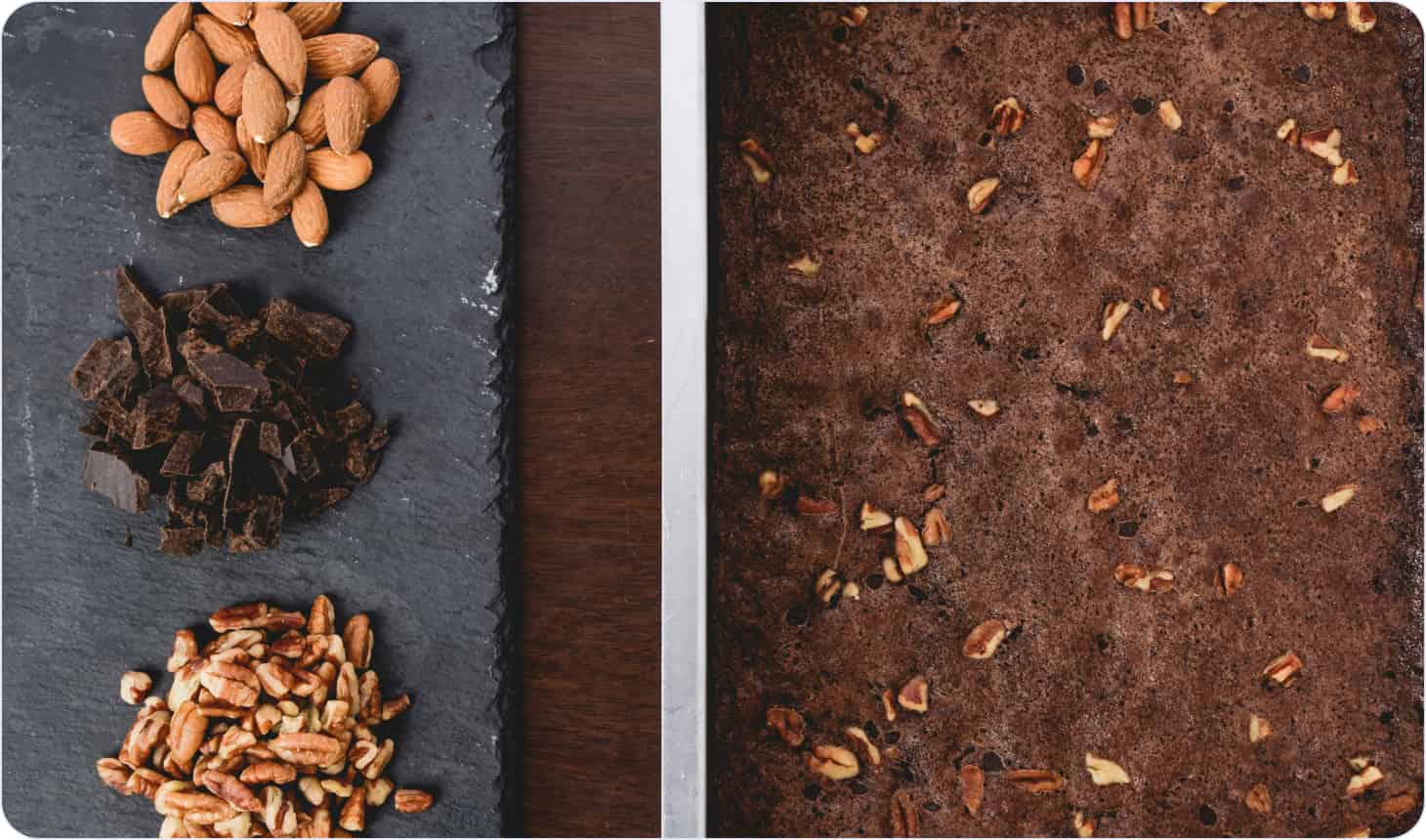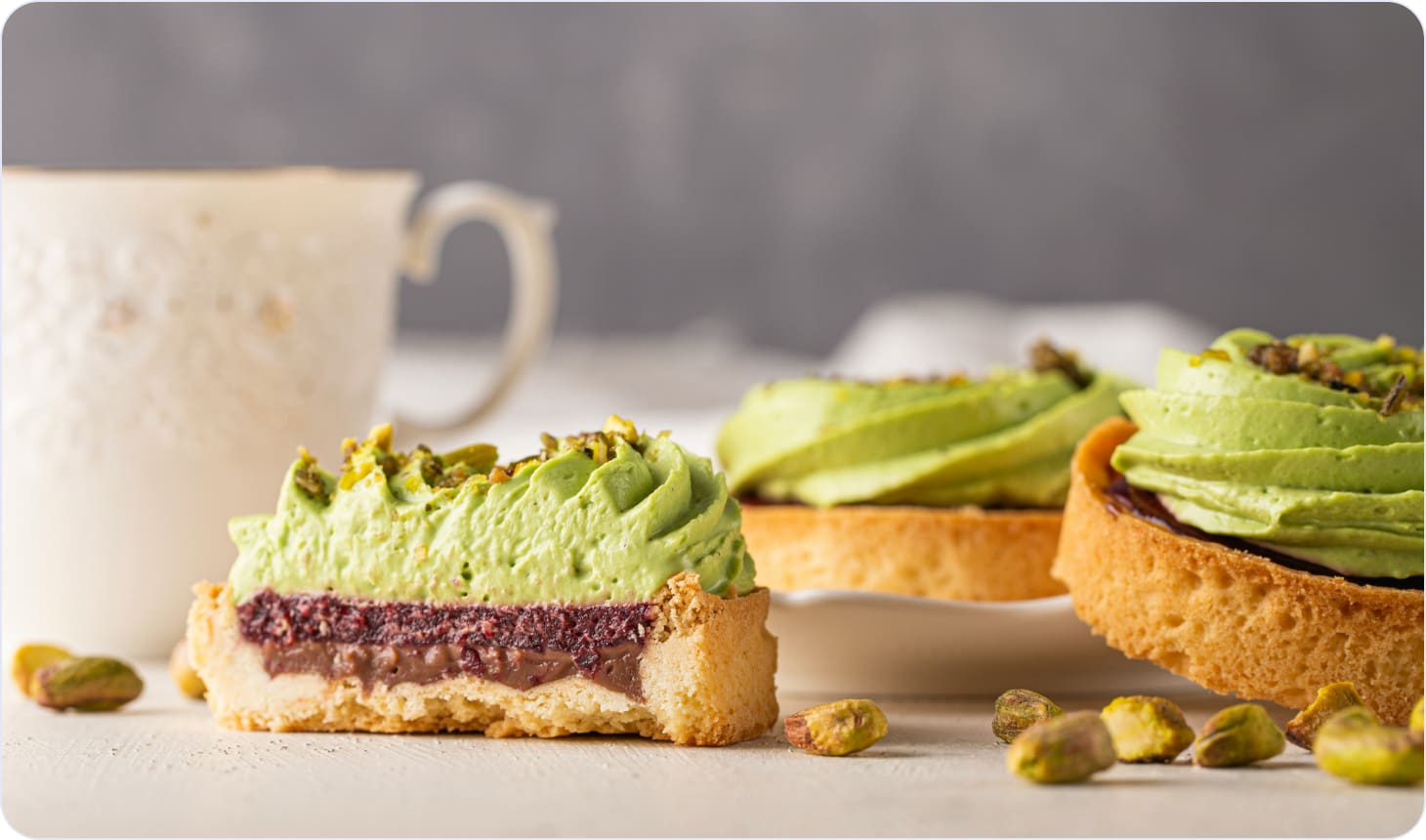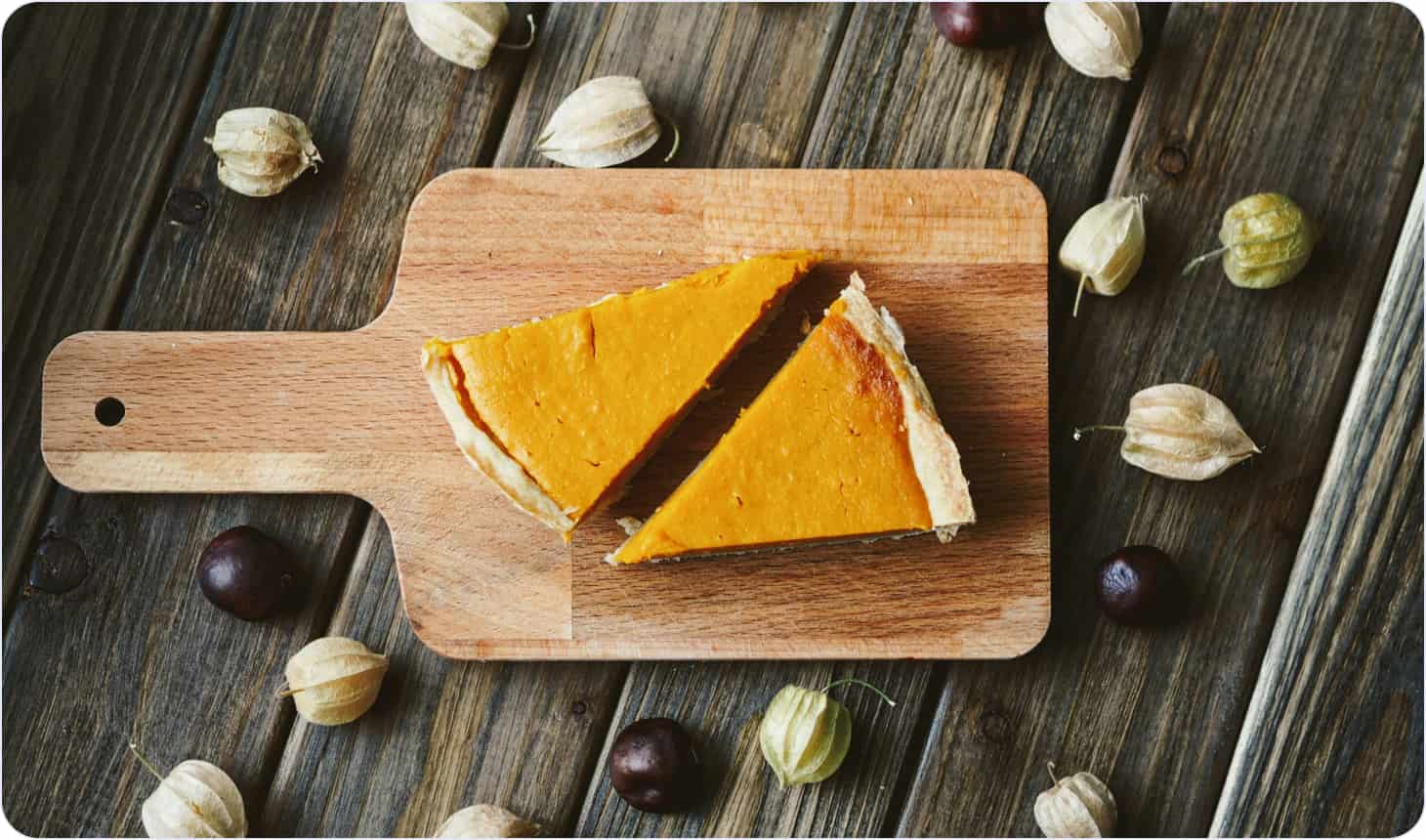The cake-making industry, just like any other, evolves, and new ideas and practices appear regularly. For this reason, trends appear and fluctuate. Each year, they get populated with brand-new and reimagined classic recipes.
In this article, we’ll narrow the focus to flavours, covering all the trendy cake flavours for you to try out and see if there are any you’d like to adopt.
Global influence on cake flavours
In 2024, cake-making is becoming increasingly influenced by global culinary traditions. This shift is understandable. Mostly, it is driven by a desire to explore new flavours and create cakes that are as diverse and dynamic as the cultures they represent.
The blending of traditional tastes with modern twists is, on the one hand, just a trend. But, on the other, it’s a great reflection of our interconnected world, where the exchange of ideas and ingredients across borders is more accessible than ever.
Globally inspired flavours
One of the most exciting developments in cake flavours is the rise of cultural fusion, where cake makers mix traditional flavours from various cultures to create something entirely new and unique. Let’s talk examples.
Japanese flavours like matcha and black sesame have become increasingly popular in Western culture. Matcha, for instance, is a ground powder made from green tea leaves. It brings vibrant green colour and a distinct earthy taste to cakes. When paired with black sesame, which offers a nutty and slightly bitter flavour, the result is a sophisticated and well-balanced dessert that feels both familiar and exotic.
Source: Unsplash
Another example comes from the Middle East, which has flavours filled with cardamom and rosewater. Cardamom, with its warm, spicy notes, adds depth and complexity to cake batters, while rosewater, with its delicate floral aroma, lends a fragrant and aromatic quality that elevates the entire dessert.
Source: Unsplash
Looking to grow a customer base? Become a professional on CakerHQ! Sign up
How global travel influences consumer preferences
As global travel becomes more accessible, people are exposed to a wider range of flavours and ingredients, which in turn influences their preferences and expectations when it comes to food and desserts in particular. This trend is reflected in the growing popularity of cakes featuring exotic flavours that might once have been considered too unfamiliar for mainstream appeal.
Take yuzu, for example. This Japanese citrus fruit, with its bright, tangy flavour that reminds lemon, has become a sought-after ingredient in desserts worldwide. Its unique taste, often described as a blend of tartness and sweetness with floral undertones, makes it an ideal component in cakes that aim to surprise and delight.
Similarly, passionfruit originally from South America, is extremely popular in Australia. It has made its way into the hearts (and taste buds) of cake enthusiasts around the globe. Known for its intense, tropical flavour that is both sweet and tangy, passionfruit adds a refreshing burst of flavour to cakes, balancing richer ingredients like chocolate or cream.
Source: Unsplash
Saffron, one of the most prized spices in the world, originating from the Mediterranean, is another example of how travel and global exposure influence cake flavours. Known for its unique taste, which is often described as slightly sweet, earthy, and subtly metallic, saffron adds a luxurious and exotic element to cakes. Its vibrant colour also improves how the dessert looks.
As people travel more and experience different cultures, they bring back with them a taste for the exotic, which in turn drives demand for cakes that offer something beyond the ordinary.
Health-conscious and sustainable flavours
In 2024, health-conscious and sustainable living are not just trends—they are fundamental shifts in how we approach food, including the cake-making world. With growing awareness of the impact of our choices on personal health and the environment, people are increasingly seeking out cake flavours that align with their values. This shift is reflected in the rise of plant-based and vegan options, the use of low-sugar and natural sweeteners, and a commitment to sustainable, locally sourced ingredients.
Plant-based and vegan options
One of the most innovative plant-based cake flavours to emerge is the combination of avocado and lime. Avocado, with its creamy texture and subtle flavour, is an excellent substitute for butter or cream in vegan cakes, providing richness without the use of dairy. When paired with lime, which adds a refreshing citrusy zing, the result is a cake that is both light and indulgent, offering a perfect balance of flavours.
Source: Unsplash
Coconut and almond are another popular pairing in plant-based baking. Coconut, whether in the form of coconut milk, cream, or shredded coconut, adds a tropical sweetness and a rich, moist texture to cakes. Almond, with its nutty flavour, complements the coconut beautifully, adding depth and complexity. Together, these ingredients create a cake that is not only vegan but also full of flavour, proving that plant-based desserts can be just as satisfying as their traditional counterparts.
Source: Unsplash
The growth of plant-based diets has pushed cake-makers to think creatively about their ingredients. This, in turn, sparked a wealth of new flavours and textures that are both delicious and aligned with the values of health-conscious consumers.
Low-sugar and natural sweeteners
As more people become mindful of their sugar intake, the demand for low-sugar and naturally sweetened cakes has grown. However, reducing sugar doesn't mean sacrificing flavour. In fact, this challenge has led to the development of new and exciting cake flavours that cater to health-conscious consumers without compromising on taste.
Stevia-sweetened vanilla is a prime example of how natural sweeteners can be used to create delicious low-sugar cakes. Stevia, a plant-based sweetener, provides sweetness without the calories or the blood sugar spikes associated with traditional sugar. When used in a vanilla cake, it allows the pure, delicate flavour of vanilla to shine through, resulting in a cake that is both simple and satisfying.
Maple and walnut is another flavour combination that works beautifully in low-sugar baking. Maple syrup, a natural sweetener with a rich, caramel-like flavour, pairs perfectly with the earthy, slightly bitter taste of walnuts. This combination creates a cake that is both sweet and savory, with a depth of flavour that makes it feel indulgent even without a lot of sugar.
Source: Unsplash
Agave and fig are more adventurous pairings, gaining popularity among health-conscious cake makers and consumers. Agave nectar, derived from the agave plant, is a natural sweetener that has a lower glycemic index than traditional sugar. When paired with figs, which are naturally sweet and have a rich, jammy texture, it creates a cake that is both luxurious and guilt-free.
These low-sugar and naturally sweetened cake flavours are a testament to the creativity and innovation in the baking world. By focusing on quality ingredients and thoughtful flavour pairings, you are able to create desserts that meet the needs of health-conscious consumers while still delivering on taste and satisfaction.
Sustainable Ingredients
With increasing awareness of the environmental impact of food production, many cake-makers are turning to locally sourced, sustainable ingredients to create their cakes. This approach supports local farmers and reduces the carbon footprint. However, it also results in cakes that are fresher, more flavourful, and deeply connected to their place of origin.
One beautiful example of this trend is the use of lavender and honey from local farms. Lavender, with its delicate floral notes, pairs wonderfully with the rich sweetness of honey, creating a cake that is fragrant, flavourful, and sustainably sourced. Using locally produced honey not only enhances the flavour but also supports bee populations and local ecosystems, making this cake a true celebration of nature.
Source: Unsplash
Heritage grains like spelt and einkorn are also becoming popular in sustainable baking. These ancient grains, which are often grown using traditional farming methods, offer a unique flavour and texture that sets them apart from more commonly used wheat. Spelt, with its nutty and slightly sweet taste, and einkorn, which has a rich, buttery flavour, add depth and complexity to cakes while also promoting biodiversity and supporting sustainable agriculture.
Innovative flavour pairings
In 2024, the world of cake flavours is being redefined by the bold and the unexpected. Many bakeries and cake-making professionals step outside traditional boundaries, experimenting with unconventional flavour pairings that, while surprising at first, come together in delightful harmony.
Unconventional but surprisingly harmonious flavour pairings
Such unconventional pairings often bring together ingredients from different flavour profiles, creating a contrast that enhances the overall taste experience.
A prime example of this is the pairing of olive oil and blood orange. Olive oil, with its rich, slightly fruity flavour, adds a subtle complexity to cakes, making them moist and flavourful without overpowering the other ingredients. When combined with blood orange, which has a sweet yet tangy flavour and a vibrant colour, the result is a cake that is both sophisticated and refreshing. The olive oil’s earthiness perfectly complements the bright citrus notes of the blood orange, creating a harmonious balance that feels both luxurious and unexpected.
Another intriguing combination is balsamic strawberry and basil. Balsamic vinegar, known for its deep, tangy-sweet flavour, might seem out of place in a cake, but when paired with the sweetness of ripe strawberries, it adds a depth and richness that elevates the entire dessert. The addition of fresh basil, with its aromatic, slightly peppery flavour, brings a unique herbal note that ties the whole experience together. This trio creates a cake that is vibrant and complex, offering layers of flavour that surprise and delight with each bite.
Source: Unsplash
Dark chocolate and chilli is a classic example of how opposites attract in the culinary world. The rich, bitter taste of dark chocolate is enhanced by the subtle heat of chili, creating a cake that is both indulgent and exciting. The chili’s warmth amplifies the chocolate’s depth, adding a memorable spicy kick. This combination plays with the senses, offering a dessert experience that is both familiar and thrillingly new.
Source: Unsplash
The blending of savory ingredients into traditionally sweet cakes
Another exciting trend in 2024 is the blending of savory ingredients into traditionally sweet cakes.
For instance, Miso caramel is a perfect example of this savory-sweet fusion. Miso, a traditional Japanese seasoning made from fermented soybeans, has a rich, umami flavour that adds depth to any dish. When incorporated into caramel, it creates a sauce that is both salty and sweet, with a savory richness that perfectly complements the sweetness of the caramel. This combination works beautifully in cakes, adding a unique twist to a classic flavour and creating a dessert that is both indulgent and sophisticated.
Sweet corn and blueberry are another pairing that exemplifies the savory-sweet trend. Sweet corn, with its naturally sugary flavour, pairs surprisingly well with the tartness of blueberries. When used in a cake, this combination creates a moist, flavourful dessert that is both comforting and refreshingly different. The corn adds a subtle sweetness and a slightly chewy texture, while the blueberries provide bursts of tangy juiciness, making each bite a delightful contrast of flavours and textures.
Rosemary and sea salt are pairings that bring together the earthy, pine-like flavour of rosemary with the briny sharpness of sea salt. When used in a cake, this combination adds an unexpected savory element that balances the sweetness of the dessert. The rosemary provides a fragrant, herbal note that pairs beautifully with the salt, enhancing the flavours of the other ingredients and creating a cake that is both aromatic and flavourful.
The combination of savory ingredients into sweet cakes is a trend that continues to gain momentum, offering a new way to experience traditional desserts. Who knows to what new discoveries it will lead us?
Reimagining classic flavours
In addition to exploring and inventing new tastes, revisiting classic flavours with a fresh perspective is another trend gaining momentum in 2024. With a modern twist in nostalgic favorites, cakes can evoke both familiar and exciting feelings.
For example, look into a reimagined version of the classic s'mores flavour. Traditionally, s'mores consist of graham crackers, chocolate, and marshmallows toasted over a campfire. However, in this modern twist, cake makers are using smoked chocolate to recreate the toasted flavour of a campfire, adding depth and complexity to the classic combination. The result is a cake that evokes the comforting nostalgia of s'mores while offering a more sophisticated and nuanced flavour profile.
Source: Unsplash
Peanut butter and miso is another example of a nostalgic flavour combination with a twist. Peanut butter, a beloved childhood favorite, is paired with miso, which adds a salty, umami-rich depth that enhances the sweetness of the peanut butter. This pairing creates a cake that is both comforting and surprising, offering a familiar flavour with an unexpected kick that takes it to the next level.
Lemon meringue with thyme is a modern take on the classic lemon meringue pie. By adding thyme, a fragrant herb with a slightly minty, earthy flavour, to the lemon meringue, cake makers can create a cake that is both refreshing and complex. The thyme adds an aromatic note that complements the tartness of the lemon and the sweetness of the meringue, resulting in a dessert that is both timeless and contemporary.
Interactive and multi-sensory cakes
Nowadays the cake design world is moving beyond just flavour and presentation, embracing the full sensory experience. This approach elevates the dessert experience, turning cakes into something that can be experienced and savored in layers, textures, and surprises.
Cakes with distinct flavours in each layer
These cakes offer a journey through taste, with each bite revealing a new flavour and adding depth to the overall experience. This approach allows for creative flavour combinations and enhances the cake's complexity, making it a true celebration of the senses.
A perfect example of this trend is the citrus trio cake, where each layer is infused with a different citrus flavour—lemon, lime, and orange. This cake offers a refreshing and zesty experience, with each layer providing its own unique burst of flavour. The lemon layer brings a bright, tangy sharpness; the lime adds a slightly bitter, aromatic note; and the orange offers a sweet, juicy richness. Together, these layers create a symphony of citrus flavours that complement and enhance each other, making every bite a new and exciting experience.
Another intriguing example is a cake with chocolate, coffee, and hazelnut layers. This combination offers a rich, indulgent flavour journey. The robust bitterness of coffee beautifully contrasts dark chocolate's deep, intense flavour, while the hazelnut layer adds a nutty, buttery sweetness that ties the flavours together. This layered approach creates a sophisticated and comforting cake, appealing to those who appreciate the complexity of these complementary flavours.
Source: Unsplash
Incorporating crunchy, chewy, and creamy textures
In addition to flavour, texture is crucial in creating a multi-sensory cake experience. The contrast between crunchy, chewy, and creamy elements can elevate the overall flavour profile, adding depth and interest to each bite. By incorporating varied textures, you can create cakes that are not only delicious but also engaging and satisfying on a tactile level.
One standout example of textural innovation is the use of pistachio praline crunch. This element adds a delightful crunch to the cake, contrasting the softer layers. The nutty, slightly sweet flavour of the pistachios, combined with the caramelised sugar of the praline, adds both texture and flavour, making the cake more dynamic and enjoyable.
Source: Unsplash
Caramelised white chocolate is another textural component that adds richness and complexity to a cake. The process of caramelising white chocolate gives it a deeper, more intense flavour with notes of toffee and caramel, while also adding a slight crunch. This element pairs beautifully with softer components like mousse or cream. It creates a striking contrast in texture that ultimately improves the experience.
Meringue, with its light, airy, and slightly crispy texture, is a classic way to add both flavour and visual interest to a cake. Whether used as a topping or incorporated into the layers, meringue adds a little sweet taste and a very tender texture that perfectly combines with denser, creamier elements.
With a variety of textures, you can experiment with a more engaging and satisfying dessert experience. These textural elements not only enhance the flavour but also add an interactive, tactile dimension to the cake, making it a true multi-sensory treat.
Need a way to sell your cakes? You can do it with CakerHQ! Sign up now
Seasonal and occasion-based flavours
The trend of tailoring cake flavours to the seasons and special occasions continues to thrive, bringing a deeper connection between the dessert and the moments we celebrate. Seasonal and occasion-based flavours not only evoke the essence of particular times of the year but also elevate special events with unique and memorable tastes. By aligning cakes with the rhythms of nature and the milestones of life, cake makers create experiences that are both delicious and meaningful.
Seasonal flavours
Everyone knows that seasonal flavours are a beautiful way to reflect the natural cycles of the year, with each season offering its own palette of ingredients that inspire the flavours of cakes.
Autumn is a season rich with warmth and spice, and no flavour captures this better than pumpkin spice. This iconic flavour, a blend of cinnamon, nutmeg, ginger, and cloves, brings a cozy, comforting taste that perfectly complements the crispness of autumn air. Pumpkin spice cakes, often paired with cream cheese frosting, are a staple of fall, offering a nostalgic nod to the season's traditions and tastes.
Source: Unsplash
As winter arrives, the flavours become more festive and robust. Peppermint and cranberry are two flavours that dominate the winter season, bringing a refreshing yet warming sensation that complements the cold weather. Peppermint, with its cool, minty freshness, is often used in cakes paired with chocolate for a classic holiday treat. Cranberry, with its tartness, adds a vibrant contrast to sweet ingredients, creating cakes that are both bright and festive, perfect for the holiday season.
With the arrival of spring, flavours lighten and brighten, reflecting the renewal and blossoming of nature. Elderflower and strawberry are quintessential spring flavours, bringing a floral and fruity combination that feels fresh and uplifting. Elderflower, with its delicate, fragrant taste, pairs beautifully with the sweet, juicy flavour of strawberries, creating cakes that are light, elegant, and perfectly suited for the season of growth and renewal.
Event-specific flavours
In addition to seasonal flavours, occasion-based cakes are an important part of celebrating life’s milestones. Whether it’s a wedding, a birthday, or a holiday, these special events call for unique flavours that add to the joy and significance of the occasion.
Weddings are often associated with elegance and celebration, and the flavour of champagne and raspberry perfectly captures this spirit. Champagne, with its light, effervescent flavour, adds a touch of sophistication to wedding cakes, while raspberries bring a sweet yet slightly tart contrast that adds depth and colour. This combination is both luxurious and refreshing, making it an ideal choice for wedding celebrations.
Source: Unsplash
For St. Patrick’s Day, a flavour that has gained popularity is chocolate stout. Stout, with its rich, malty flavour, adds a robust and slightly bitter note to chocolate cakes, creating a dessert that is both hearty and indulgent. This flavour combination not only pays homage to the Irish tradition of stout beer but also offers a unique twist on the classic chocolate cake, making it a festive choice for St. Patrick’s Day celebrations.
As the leaves change and fall festivals begin, the flavours of apple cider and caramel become particularly popular. Apple cider, with its sweet and tangy flavour, embodies the essence of autumn, while caramel adds a rich, buttery sweetness that complements the cider perfectly. Together, they create a cake that is warm, comforting, and perfectly suited for fall festivals and gatherings.
Event-specific flavours offer a way to make special occasions even more memorable. By choosing flavours that reflect the significance and atmosphere of the event, you can create cakes that not only taste wonderful but also enhance the overall experience, adding a layer of meaning and celebration to the occasion.
DIY inspiration and tips for cake makers
The world of cake making is filled with opportunities for creativity and innovation, and one of the most rewarding aspects is experimenting with new and exciting flavours in your own kitchen. Regardless of whether you're a beginner or an experienced baker, there's no better way to put a personal stamp on your cakes than by developing your own flavour combinations.
Exploring new cake flavours can feel like an art form to a certain degree. It allows cake makers to break free from traditional choices and try something completely original. To start innovating flavours, you can refer to the few following tips:
- Balancing flavours. In new flavours, balance is super important. Start with a base flavour and layer complementary or contrasting flavours around it. A simple vanilla cake, for example, can be enhanced with bright citrus notes, or deepened with rich spices like cinnamon and cardamom.
On the contrary, if you’re working with bold flavours like chocolate or coffee, consider balancing them with lighter or more delicate ingredients like fruits, herbs, or floral extracts.
When combining flavours, think about how sweetness, acidity, and richness interact. For instance, pairing the tangy sweetness of passionfruit with the earthy richness of dark chocolate creates a balanced and exciting contrast. Meanwhile, adding a touch of salt to a sweet cake (like salted caramel or miso in a caramel glaze) enhances the sweetness and adds depth.
- Incorporating unusual ingredients. Innovation often comes from using unexpected ingredients in familiar contexts. Ingredients like olive oil, balsamic vinegar, or even savory herbs like rosemary or basil can add intriguing complexity to a cake. Similarly, using spices like chili, saffron, or star anise can introduce a whole new dimension of flavour.
Think about regional ingredients covered earlier that can add unique twists, like matcha powder from Japan, cardamom from India, or lavender from France. These ingredients can transform a standard cake into something more adventurous and globally inspired.
- Experimenting with textures. Flavour is important, sure, yet texture plays a critical role, too! When creating your cakes, consider combining different textures to make every bite dynamic. For example, try adding crunchy elements like toasted nuts or praline, chewy textures like caramel or dried fruits, and smooth fillings like ganache or custard.
Bottom line
As you can see, 2024 blends tons of different desires. On the one hand, people crave something exotic, innovative, and sustainable. On the other, timeless classic and seasonal cakes are always trendy.
If you’re composing a cake menu or simply thinking of expanding your skills, remember to look wider. 2024 offers tonnes of possibilities and ideas for cake-making, many of which are quite simple to implement.
Yet, at CakerHQ, we know that not only trends interest cake makers but there is much more to this business. For this reason, checking out our blog is worth it, as we share a lot of insights, ideas, and guides not solely on cake-making but about the business side of things. Lastly, if you’re a professional yourself, become a part of CakerHQ professionals to find new customers, showcase your cakes, and turn your passion into profit.
